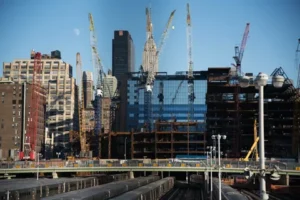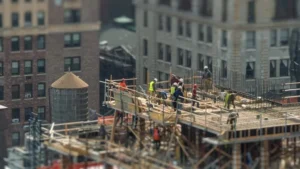Introduction
In New York City dense vertical environment, scaffolding is more than a temporary structure it is essential infrastructure. Whether it’s for construction, restoration or maintenance, scaffolding systems are the backbone of building accessibility and public safety. Choosing the right scaffolding company in NYC is critical to ensuring compliance, minimizing disruption and maintaining progress on any urban project.
Urban Construction Access in New York
Scaffolding companies in New York operate in a complex ecosystem shaped by architectural density, strict regulations and constant urban activity. The industry supports thousands of construction projects by providing essential vertical access solutions, pedestrian protection and site stability. These companies work closely with developers, contractors and city officials to design and implement scaffolding solutions that keep projects moving and people safe.
Core Entities and Service Attributes
Scaffolding Companies
Key services include:
- Design and engineering of scaffolding systems
- Installation and dismantling
- Sidewalk shed and canopy systems
- Temporary stairs and access bridges
- Façade access and debris netting
- Inspections and safety compliance
Project Environments
- High rise towers under construction or renovation
- Low- rise residential or commercial properties undergoing façade repair
- Public infrastructure projects requiring pedestrian safety measures
- Emergency response scaffolding for unstable structures
Regulatory Landscape
Scaffolding in NYC is heavily regulated. Companies must comply with Department of Buildings requirements, obtain proper permits and ensure that installations are safe for workers and the public. Non compliance leads to fines, work stoppages and legal liability.
Adjacent Contexts and Strategic Factors
Access and Logistics
- Scaffolding setup often involves limited street space, traffic coordination and restricted operating hours
- Projects must plan around pedestrian flow, building entryways and neighboring properties
- Scaffold layout must support work crews while ensuring safe access for emergency services
Cost Considerations
- Pricing depends on height, duration, complexity and engineering requirements
- Additional costs may arise from permit delays, overtime labor or material adjustments
- Transparent, upfront estimates help clients avoid unexpected expenses
Safety and Public Perception
- High visibility scaffolding affects neighborhood aesthetics and pedestrian convenience
- Prolonged scaffolding use on idle sites can draw community complaints
- Reliable companies prioritize removal once work is complete to maintain a clean environment
Selecting the Right Scaffolding Provider
- Licensing and Insurance: Ensure the company is fully licensed to operate in NYC and carries proper liability and worker insurance.
- Industry Experience: Look for providers with a track record of completing similar projects especially if your building is in a high traffic area or a landmark zone.
- Engineering Capabilities: Choose a company that offers custom design, stamped engineering plans and DOB filing support.
- Safety Standards: Evaluate worker training, inspection schedules and accident history. Safety first companies keep crews and pedestrians protected.
- Transparent Pricing: Professional firms offer detailed quotes that clearly outline scope, materials, schedule and contingencies.
- Project Support and Communication: Good communication, responsiveness and logistical foresight make a huge difference on high pressure timelines.
Why It Matters
In New York City, scaffolding is everywhere for good reason. It is what enables maintenance on aging façades, restoration of historic properties and the construction of the next skyscraper. But poor scaffolding practices cause safety hazards, project delays and public frustration. That is why selecting a competent, experienced provider is essential to long term project success and safety.
What do scaffolding companies in NYC provide
They offer design, installation and removal of scaffolding systems for construction, maintenance and safety access.
Are scaffolding permits required in NYC
Yes, permits from the Department of Buildings are required for most scaffolding installations.
What is a sidewalk shed
A sidewalk shed is a temporary protective structure built to safeguard pedestrians during building construction or repair.
How long can scaffolding remain on a building
It can stay as long as needed, but prolonged scaffolding without active work may lead to fines or enforcement actions.
Are scaffolding companies responsible for safety
Yes, they must follow strict safety protocols, provide trained workers and maintain compliance with local laws.
Can scaffolding be customized for different buildings
Yes, systems are engineered based on building height, layout and type of work being done.
Do companies offer engineering and design services
Reputable providers include stamped drawings, load calculations and compliance documentation.
What types of projects require scaffolding in NYC
Facade inspections, restorations, window replacements, high rise construction and emergency repairs all require scaffolding.
How do I choose a reliable scaffolding company
Look for experience, licenses, safety record, insurance and references for similar projects.
Are there penalties for non-compliant scaffolding
Yes, non compliance can result in DOB violations, fines or stop-work orders.
Conclusion
Scaffolding companies in NYC play a critical role in the city’s construction and maintenance landscape. Their work ensures safe access, supports complex renovations and protects both crews and the public. With careful selection, reliable engineering and a focus on compliance, a scaffolding partner can become an asset rather than a liability. In a city built on vertical ambition, scaffolding is what keeps it all connected—literally and safely.



